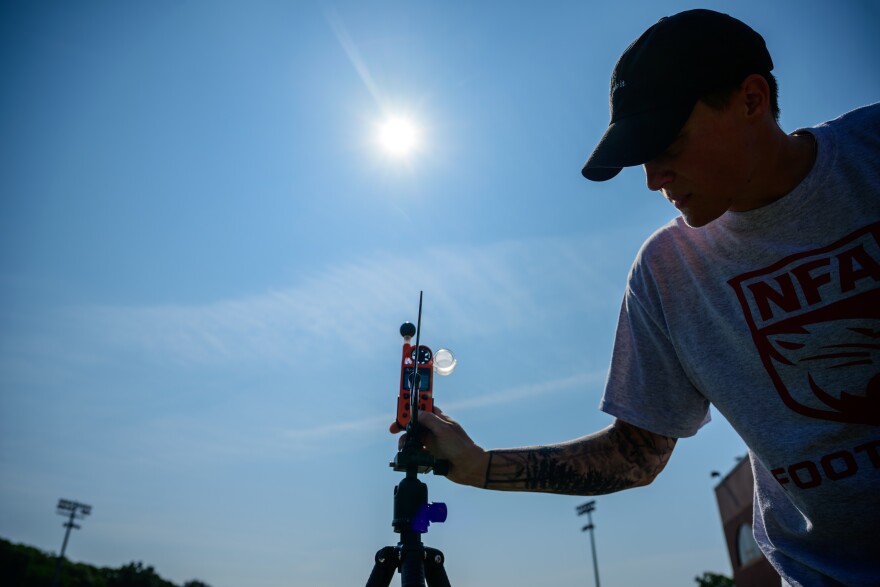Athletic trainers are monitoring excessive temperatures as high school athletics pick up steam throughout Connecticut.
We won’t practice if the field is 95 degrees, according to Allison Gilbert, an athletic trainer at Killingly High School. According to Gilbert, the old proverb that goes, “Just push them hard, punish them by not giving them water, etc.” shouldn’t be used any more.
On August 11, Gilbert and other eastern Connecticut athletic trainers convened at Norwich Free Academy to discuss heat procedures. The trainers, who are medical specialists in charge of ensuring players avoid injuries, rehearsed several situations in which the heat could cause significant illness in pupils on the field.
A trainer posed as a pupil experiencing exertional heat stroke, a potentially lethal condition in which the body temperature rises above 104 degrees Fahrenheit, during the session.
According to Rebecca Stearns, chief executive officer at the University of Connecticut’s Korey Stringer Institute, organ failure is the result of “essentially cooking from the inside out” and “your cells dying.” Korey Stringer, a professional football player who passed away in 2001 from exertional heat stroke, is honored by the institute’s name.
In this situation, trainers are instructed to submerge the individual in water and ice, either in a body bag or, in the event that the school lacks one, in a huge immersion tub.
According to Katie Cooper, an athletic trainer at Stonington High School, the patient would go straight in the middle of the handles, which are on both sides.
In both directions, you rock it. According to Cooper, applying cold water and ice to the entire body helps lower body temperature.
An increasing risk as summer temperatures rise
As temperatures rise due to global warming, schools are attempting to keep pupils safe through measures like these. In North America, the past two years have been the hottest on record. The Environmental Protection Agency reports that 9,000 school athletes in the US receive treatment for heat-related diseases each year.
Connecticut has used its extreme heat protocols four times so far this year, indicating several days of hot and muggy weather that might make heat-related illnesses worse.
According to UConn’s Stearns, whose study indicates that exertional heat stroke claims the lives of one to two high school and middle school athletes annually in the United States, there are limits to what is safe to exercise in.
Unless we do anything else, there will be more days when we have to cancel practice or more days when those practices are altered more, Stearns stated.
This could entail training indoors or delaying the start of sports seasons. However, for the time being, the emphasis is on rescheduling training sessions to avoid the midday sun and being prepared for any emergencies, particularly in the pre-training season when students are returning from summer vacation and are more likely to become ill due to the heat.
The first few days of practice, when athletes are returning, are also when we observe the biggest danger in all sports, Stearns added. We have no idea how fit they are right now. They may not have had a consistent schedule. Once more, they’re performing a novel activity while it’s hot.
Cooper explained that she and the other athletic trainers at Norwich Free Academy get together every season to plan ahead and prevent a student from being ill due to the heat.
According to Cooper, “a lot of your experience is literally on the spot.” Nothing is seen until it occurs. Therefore, it definitely helps that we are together in the same place for a conference.
Report for Americacorps member Ine Pennello writes about climate change and the environment for the Connecticut public.






